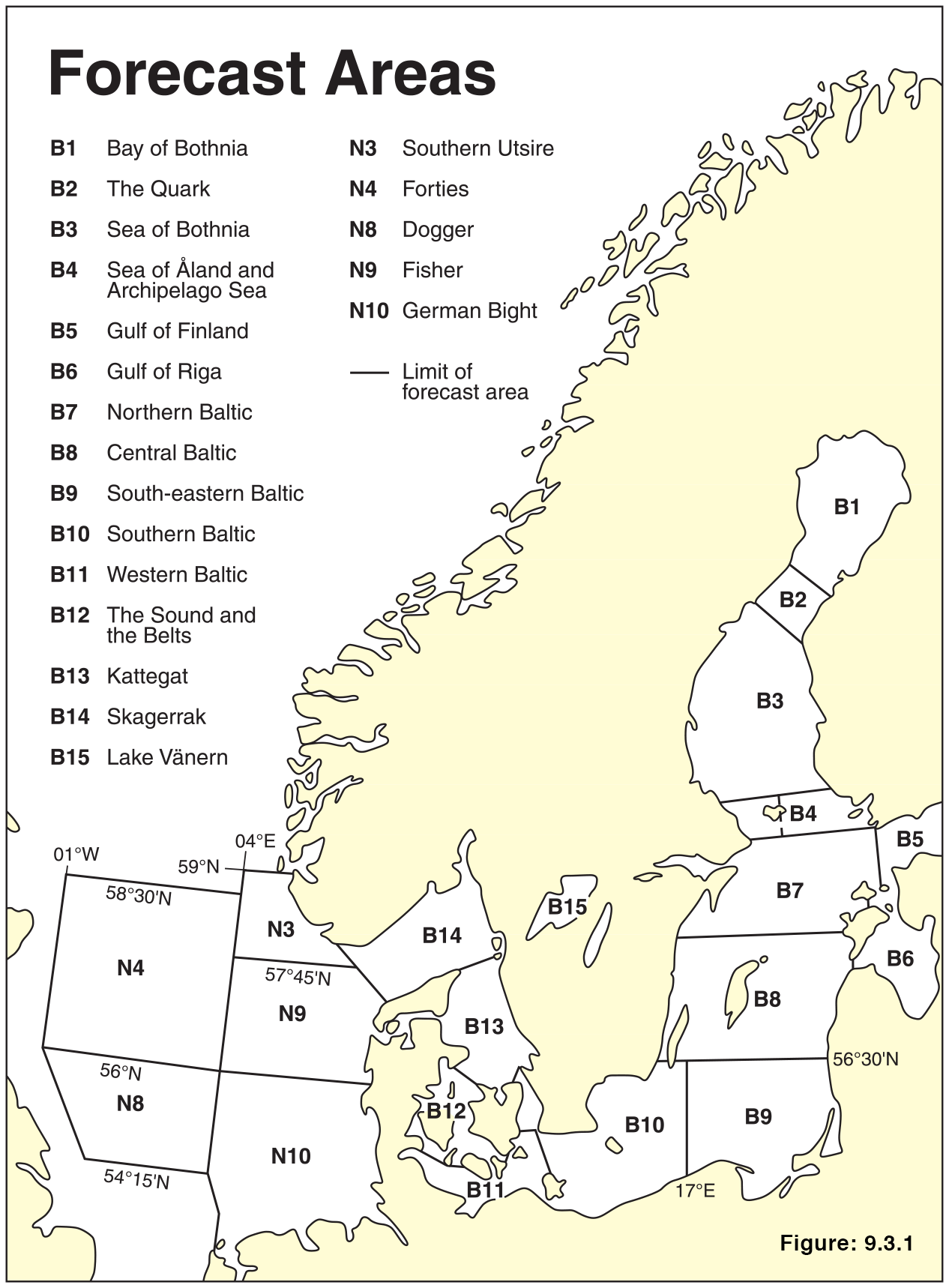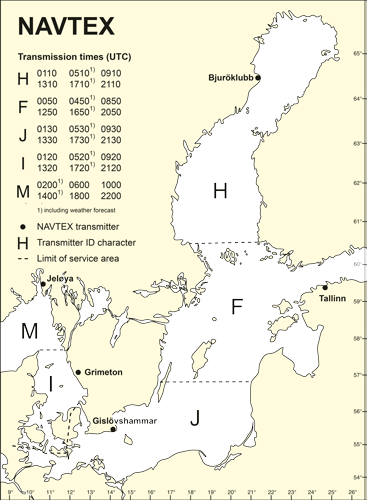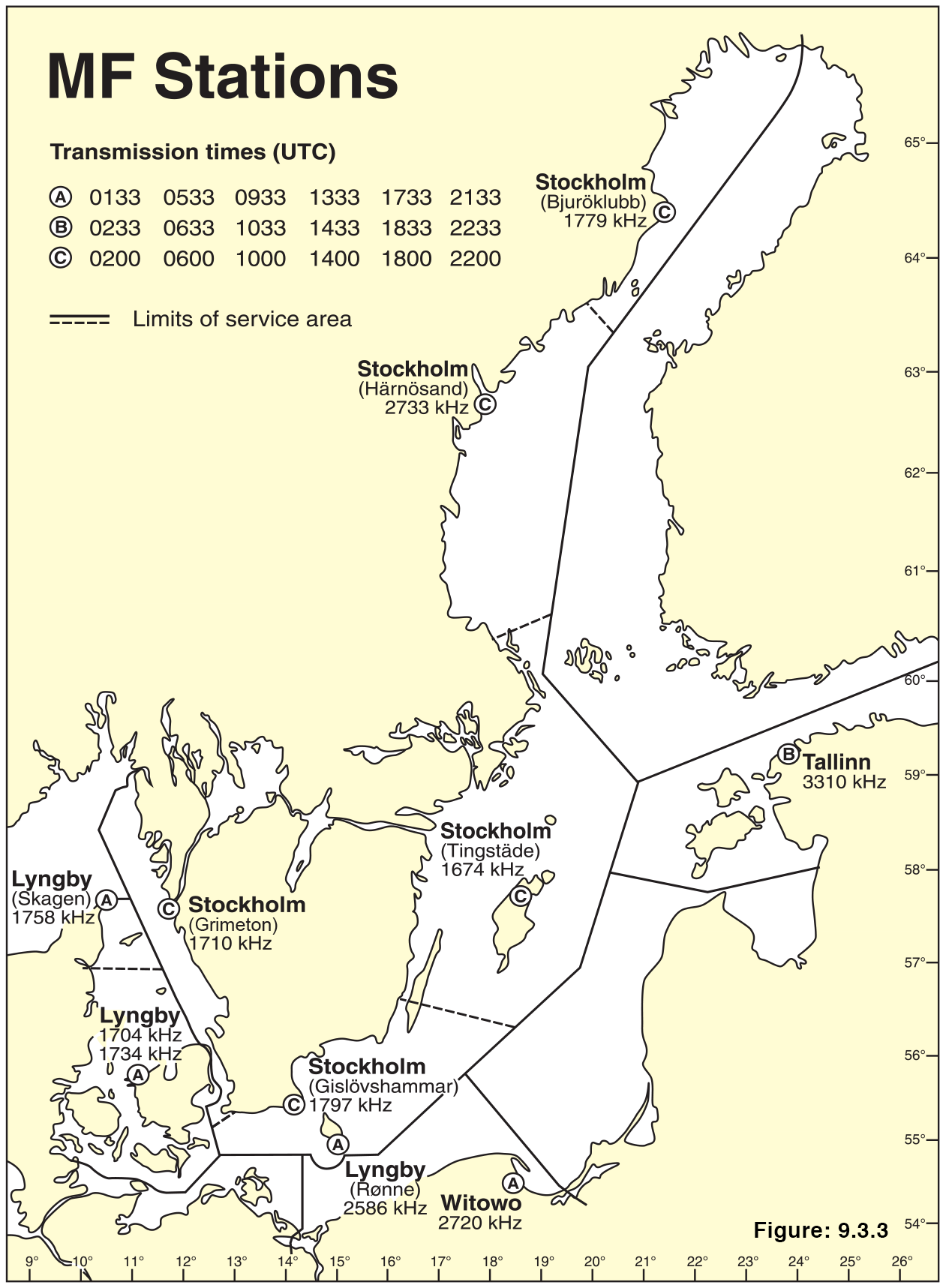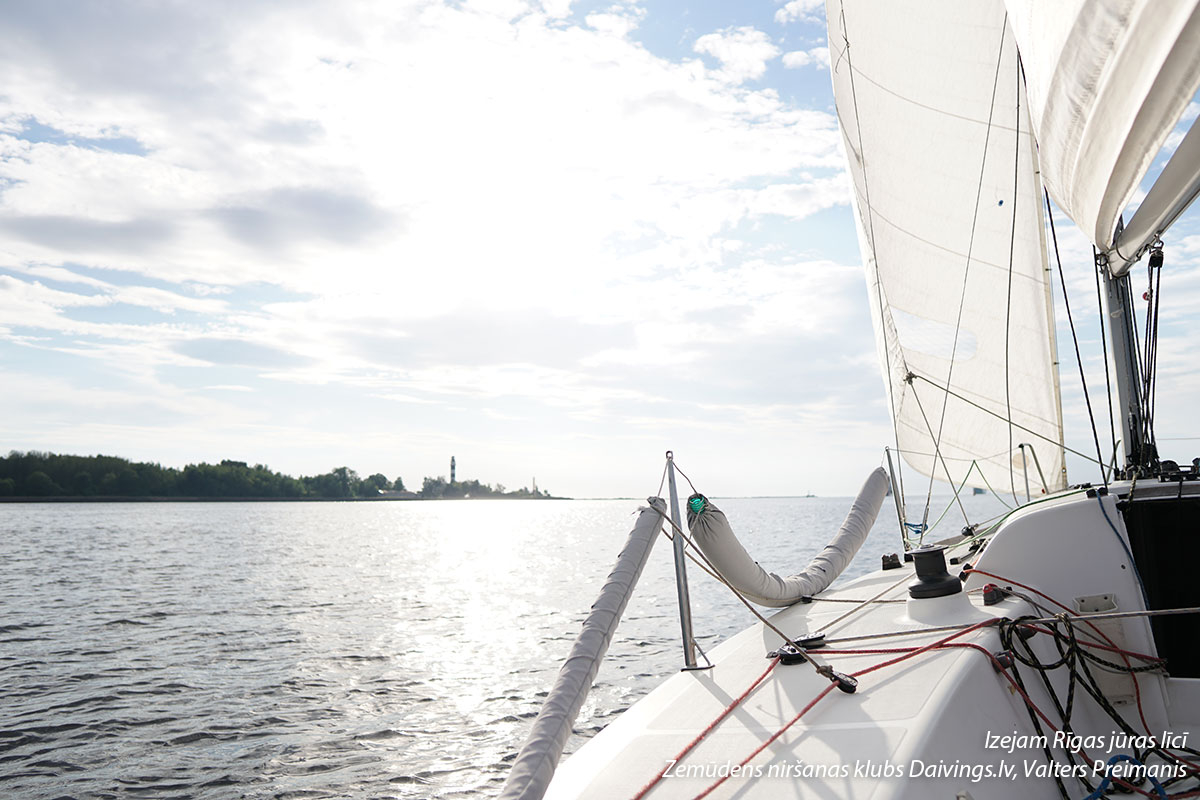Maritime Radio Service or in English Maritime Radio Service.
Table of Contents
GMDSS
All coastal waters in the Baltic Sea region are covered by onshore VHF DSC stations and are therefore classified as GMDSS Marine Area A1. The central parts of larger basins do not reach the VHF, but are fully covered by MF DSC and NAVTEX and are classified as GMDSS Marine Area A2.
Maritime Safety Information (MSI)
Maritime Safety Information (MSI). Coastal navigation warnings, gust warnings, SAR warnings, weather forecasts and ice messages are sent to NAVTEX and, in some parts of the Baltic Sea, to VHF and / or MF radiotelephony.
Local navigation warnings are transmitted by various VTS, MRCC, coastal radio and port radio stations, see relevant maritime publications.
Forecast areas, NAVTEX, MF stations
- Weather warning forecasting areas are shown, the Gulf of Riga is in area B6 in Figure 1.
- NAVTEX service areas and transmission schedules are shown in Figure 2.
- Zone F, Gulf of Riga, Latvian times 03:50, 07:50, 11:50, 15:50, 19:50, 23:50, (UTC 0050, 0450, 0850,1250, 1650, 2050)
- MF station and transmission schedules are shown in Figure 3.

Recreational craft with a hull length of 24 meters or less
1. Equipped with ultrasonic radio equipment capable of rejecting a call from the DSC system on the frequency 156.525 MHz (channel 70) with the capability to transmit an emergency call on channel 70 from the ship's control position (recreational craft not intended for commercial operations may be omitted);
2. Equipped with at least one portable splash-proof ultrasonic radio station; be capable of providing two-way radiotelephone communications on the frequencies 156.800 MHz (channel 16), 156.650 MHz (channel 13) and 156.300 MHz (channel 6);
3. It is recommended to be equipped with medium-wave and short-wave radio equipment that transmits and receives emergency and safety signals using DSC and radiotelephony in the frequency 2182 kHz;
4. It is recommended to equip the NAVTEX receiver. NAVTEX receiver - a receiver that automatically receives maritime safety information in the 518 kHz frequency frequency using narrowband direct printing telegraphy.



